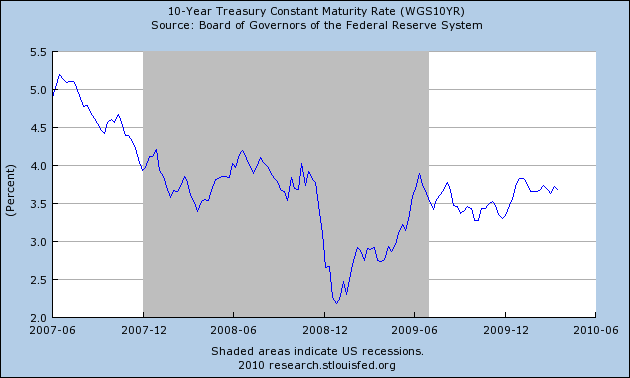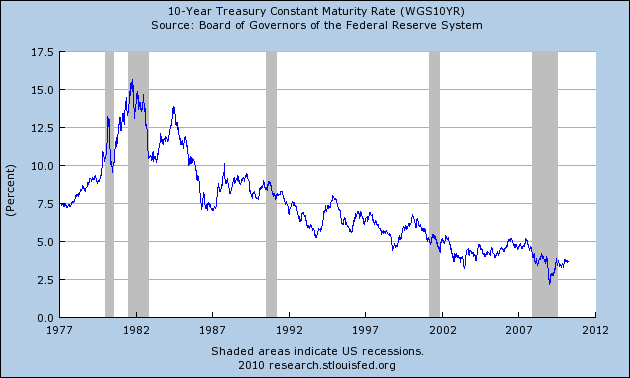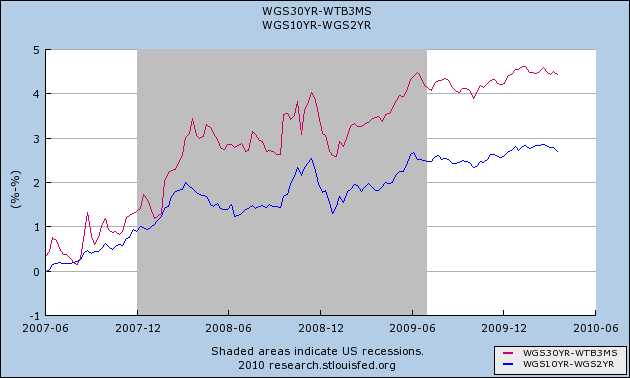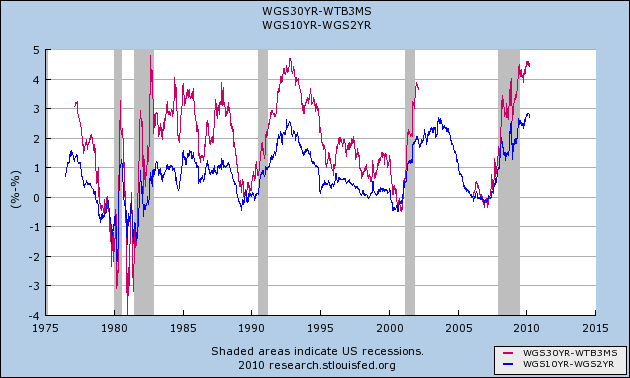L’affaire Goldman in price/information terms
I have found it helpful to pull away from the details of the Goldman/Paulson/ABACUS deal and think through the issues abstractly. In the unlikely event that others will find it helpful, I present the tale below…
Let’s suppose there is a trader, whom we’ll call “Trader X”. Trader X wishes to take a very large position on a bunch of related and correlated financial instruments. But Trader X has a problem. The size of the trade he wants to make is large relative to ordinary turnover in the asset. The market would almost surely move against him before he executed more than a fraction of his trades. Market-makers are very sensitive to the balance of order flow. If Trader X starts calling dealers and executing trades, they would observe one-sided flow and quickly adjust the price until trades on the other side were attracted and the flow returned to balance. This “adverse price action” would significantly reduce the profitability and increase the risk of X’s trade. It would also reveal his information or belief about future price movement to the market, enhancing market efficiency perhaps, but reducing his edge.
Trader X’s problem is well-known: sporadic large trades are known as “block trades”, and naively executed block trades are inefficient and expensive. If Trader X was buying and selling stock, he could make use of various tools that have been developed to circumvent this problem, “dark pools” that try to match big buyers and sellers without revealing strategic information about either party, to one another or to the market at large. Unfortunately, block trading platforms haven’t yet evolved for what Trader X wants to buy. The instruments he wants are similar and correlated, but not quite as standard as stocks, and “block trades” like his are sufficiently rare that even if the infrastructure existed, he’d be unlikely to find a counterparty quickly. Trader X could try to trade strategically and build a position over time, but given the thinness of the market that would take too long, the opportunity will disappear. Trader X is in a bind.
So, he goes to Investment Bank Y and explains the situation. Bank Y has many connections in the investing community, and could “shop the deal”, looking for a large investor to take the other side of the trade. But other investors are like market makers: they view strong demand to as an indicator of a counterparty’s information, and fear getting ripped off. Bank Y can find investors to trade with Trader X, but they would demand a large price premium over current quoted prices in order to take a position opposite a trader who acts like he knows something (whether he does in fact or not). If Trader X could persuade counterparties that he had no information — if it were clear his motivation was to hedge a risk, rather than gamble on a price change — then other investors might be willing to take the trade, and maybe he could find competitive bidders and get a decent price. Unfortunately, that just isn’t the case. Trader X is widely known to be a speculator, and by revealing the trade he wishes to make and the money he is willing to throw at it, he would reveal both his beliefs and his strong commitment to those beliefs. Other investors without special information would be wary of trading against such a certain counterparty, and would not offer favorable terms.
Bank Y asks Trader X what the ideal solution to his problem would be. Trader X thinks for a moment and says, “Ideally a counterparty would naturally appear who happens to want the opposite side of my trade. If they were buying while I was selling, order flow would be balanced, and we could transact at current market prices.”
Bank Y considers for a moment, and comes up with an idea. “Suppose we start a little investment company up, something like a mutual fund devoted to the kind of positions you want to trade. Since you want to take a ‘short’ position, we’ll find a manager enthusiastic about the prospects of the ‘long’ side and help him start this little fund. There are lots of reputable money managers in the world, with a wide variety of views, so we can find somebody excited and capable of running this fund. We have lots of connections among investors, and we are in the business of drumming up interest in new investment vehicles, so there’s a reasonable chance we’ll find people to fund the strategy at a scale large enough to match your trade. Once we do, there will be a natural buyer of what you want to sell, and you can enter the market without impacting prices. In fact, since both you and this fund will use us as market makers, we’ll just cross the trades internally at prevailing prices, and neither you nor the fund will have to worry about adverse price action.”
“Hooray!”, says Trader X, “You guys are fabulous.” And it all worked out just exactly as Bank Y described.
Let’s suppose that this has all just happened, and asset prices have not moved at all. There has been no collapse of some gobbledygooky RMBS/CDS/CDO market. Today, everybody is happy. No harm, no foul, right? Was this little strategy okay?
Trader X has profited compared to all of his feasible alternatives. He acquired a position he desired very efficiently. Bank Y has earned a fee. But let’s consider the situation of the investors in the new fund, whom we’ll refer to as “the Investors”.
The Investors, as of this writing, hold a position they are pleased to hold at prevailing market prices. However, the Investors would not have taken the position at all had it not been for the intervention of Bank Y.
Let’s call the difference between the prevailing market price and the price Trader X would have had to pay a direct counterparty to take the other side of his trade “the Premium”. If Bank Y had simply shopped X’s trade to the Investors, they would have demanded the Premium. (If they would not have, why go to the trouble of starting the investment fund?) So, the net effect of taking the indirect route was a transfer of the Premium relative to the other feasible opportunity. Under the “full disclosure” scenario, the premium would have gone to the Investors. Under the “little investment company scenario”, Trader X keeps the Premium. The Premium is the value of the information not revealed, conditional on the trade getting done. (It is a maximum bound on that value if the trade would not get done at all under full disclosure.)
Note that this redistribution of wealth does not depend at all on how the investments ultimately perform. It doesn’t matter whether, in the future, Trader X is vindicated and the Investors go broke, or the Investors make a killing and Trader X moves back in with his mom. The Investors suffered an opportunity cost (and Trader X enjoyed a benefit) at the time the trade occurred, based on how the transaction was architected. Trader X might be an idiot or a genius. The Investors might have been duped, or they may have invested only after extensive due diligence (which revealed everything except the confidential involvement of Trader X). Whatever. We want to consider the only the events leading up to the trade, before market fluctuations confuse the issue. Did Bank Y behave ethically when, by withholding information, it got a deal done and caused a transfer of wealth to X?
If Bank Y had plainly represented itself as an agent of Trader X, perhaps there would have been no problem. Bank Y acted very effectively in Trader X’s interest, but in a manner that can fairly be described as adversarial with respect to the Investors. But if Bank Y had disclosed the relationship, the Investors might have inferred Trader X’s intentions and demanded the Premium (unless Bank Y actively misled them, which I’ll presume is bad). So was it okay for Bank Y to be a secret agent of Trader X while engaging in its conventional business of marketing a new investment fund?
In the story as I’ve told it, the undisclosed information was clearly material — the Investors would have received the Premium or would have preferred not to do the deal had the circumstances of the trade been plainly presented. When an investment bank is acting as an agent, to what degree can it withhold material information from other parties in order to benefit its client? And what is the relationship of an investment bank to those to whom it is marketing a new investment product? Clearly it is something less than fiduciary. Potential investors seem something less than “clients” as well. Are they simply adversarial “counterparties”? Perhaps they are “customers”? In any case, what duties are owed them?
I think I’ll just let these questions dangle. What do you think?
This exercise came from thinking through the excellent comments to the previous post, especially those of JKH. Thanks always to interfluidity‘s exceptional readers.




